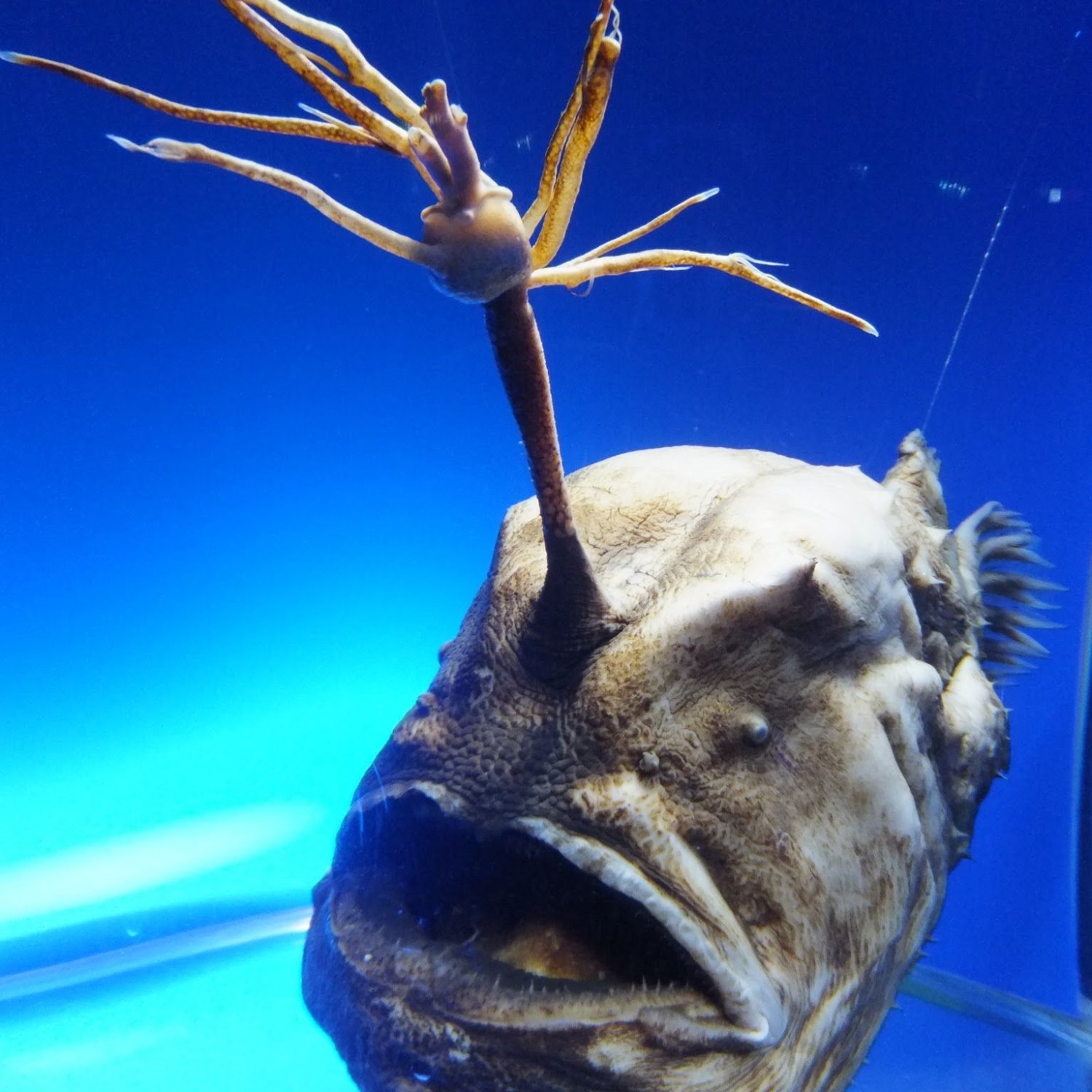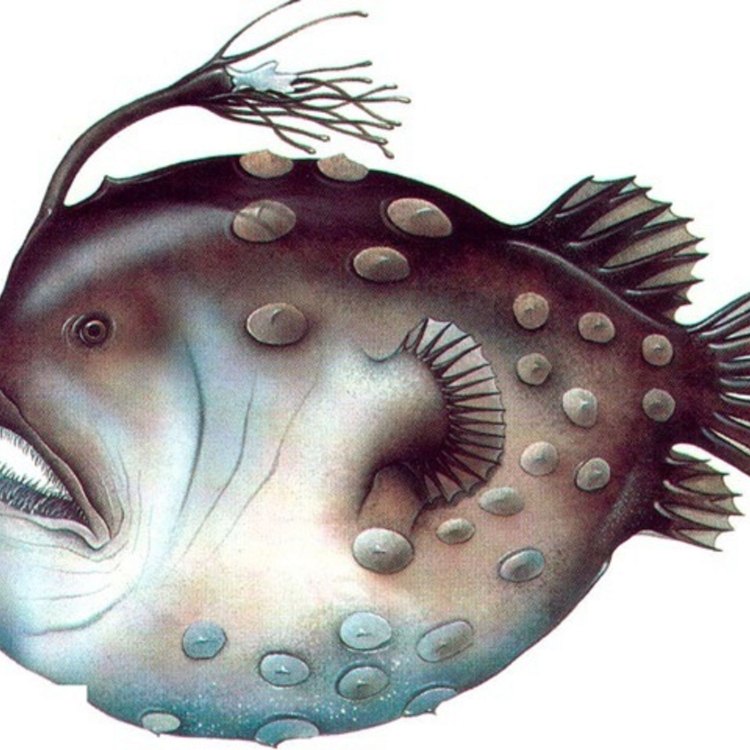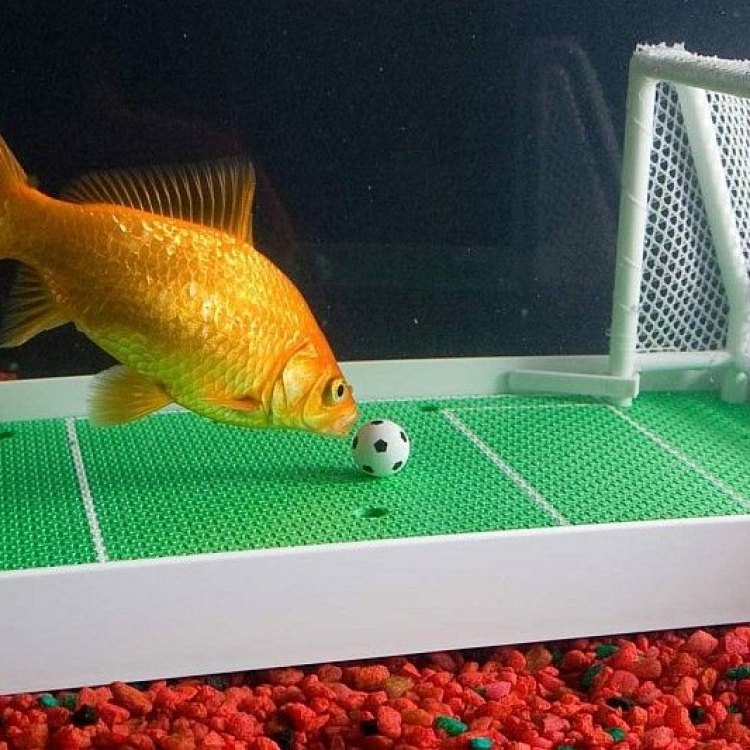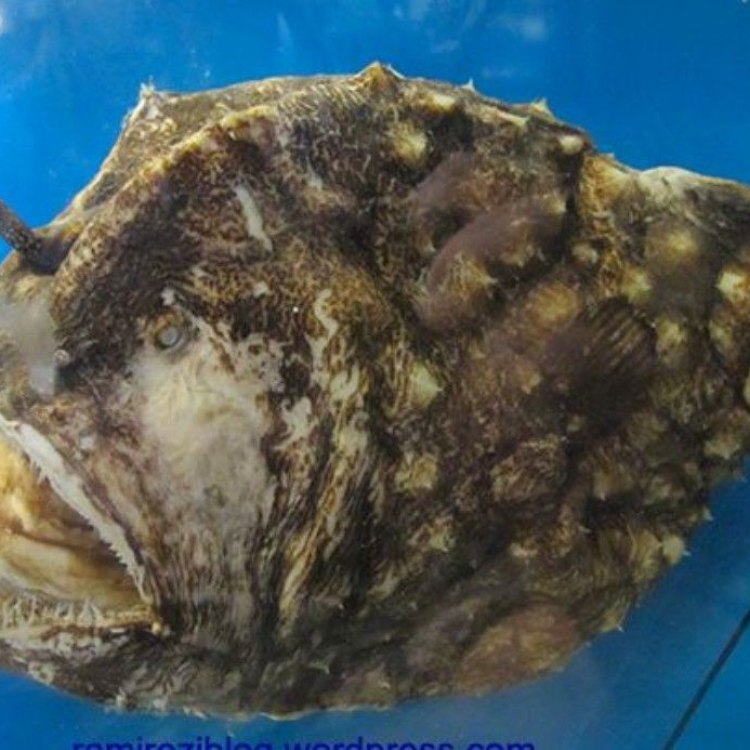
Football Fish
Up to 20 inches
The Football Fish, part of the Himantolophidae family, is an ocean dweller with a unique appearance. With a length of up to 20 inches, it may not be a giant but is known for its prominent teeth and bioluminescent lure. It's a fascinating creature found in the depths of the ocean. #FootballFish #OceanLife #UniqueAppearance
Animal Details Summary:
Common Name: Football Fish
Kingdom: Animalia
Habitat: Deep sea
The Fascinating World of the Football Fish
We live on a planet full of diverse and fascinating creatures, and one of the most captivating of these is the Football Fish, scientifically known as Himantolophus sp. This deep-sea inhabitant may have an unusual and even intimidating appearance, but there is much more to it than meets the eye. In this article, we will delve into the unique characteristics and behavior of the Football Fish, shedding light on the mysteries of this intriguing creature.The Football Fish is a member of the Kingdom Animalia, making it part of the vast and diverse animal family Football Fish. It belongs to the Phylum Chordata, which includes all animals with a spinal cord and a backbone. Within the Chordata phylum, the Football Fish belongs to the class Actinopterygii, which comprises nearly 90% of all fish species. This class is characterized by its fin rays, which provide support and allow for more flexible movement. The Football Fish, like all other members of this class, has a unique body structure and specialized adaptations that allow it to thrive in its environment.
The Football Fish also belongs to the order Lophiiformes, a group of fish known for their camouflage and ambush hunting tactics. Within this order, the Football Fish is part of the family Himantolophidae, which consists of five species of anglerfish, all with variations of the same name – Himantolophus. These species are found in oceans around the world, making the Football Fish a globally distributed animal. With its widespread presence, it is no surprise that the Football Fish can be found in various countries, living in the depths of the ocean.
As mentioned earlier, the Football Fish's habitat is the deep sea, where light barely reaches Feather Star. It is typically found in ocean depths of up to 3000 feet, making it a truly elusive creature. Due to their habitat, Football Fishes have adapted to withstand tremendous water pressure, which is critical for their survival. They have a strong and compact body, allowing them to resist the intense pressures of the deep sea and move effortlessly in the water.
The Football Fish has a unique feeding method – it is an ambush predator. It has a specialized organ known as an illicium, which hangs from its head and contains a bioluminescent bulb. This bulb emits a light that lures its prey towards the Football Fish. Once unsuspecting prey gets close enough, the Football Fish uses its sharp, needle-like teeth to capture and devour its meal. This method of luring prey is known as bioluminescence, a fascinating adaptation that helps the Football Fish thrive in its dark habitat.
Another remarkable feature of the Football Fish is its voracious appetite. It is known to have an oversized mouth that can stretch to nearly the size of its body, allowing it to consume prey up to twice its size. It also has a flexible stomach, which can expand and accommodate larger meals. With its unique physical and behavioral adaptations, the Football Fish is undoubtedly a successful predator in the deep sea.
One of the most intriguing aspects of the Football Fish is its appearance. It has a dark coloration, which helps it blend into the dark depths of the ocean. Its body shape is also unique, with a large, rounded head and a small, tapered body. It has small, beady eyes that sit on top of its head, giving it a "flat face" appearance. The Football Fish also has a long, pointed dorsal fin that runs the length of its body, adding to its distinct appearance. All these features contribute to the Football Fish's overall intimidating and alien-like look.
The Football Fish can grow up to 20 inches in length, making it a relatively small fish compared to other deep-sea inhabitants. However, do not let its size deceive you – it is still a formidable predator that can easily compete with larger, more well-known deep-sea creatures. Despite its small size, the Football Fish's unique adaptations and feeding habits make it a fierce and successful hunter in its habitat.
The Football Fish is also known for its behavior, or lack thereof. It is a nocturnal creature, meaning it is most active during the night. During the day, it tends to remain motionless, conserving energy and waiting for the cover of darkness to hunt. This behavior is also why Football Fish sightings are relatively rare. It is not often that humans come across them, as they tend to remain hidden during the day.
Overall, the Football Fish is a truly fascinating and enigmatic creature. Its unique physical features, behavior, and specialized adaptations make it an impressive and efficient predator. Although it may have an intimidating appearance, it is a vital part of the deep-sea ecosystem, and its presence is crucial for maintaining a balanced marine environment.
In conclusion, the Football Fish is more than just a strange-looking fish – it is a symbol of the diversity and wonder of our planet's vast oceans. Its discovery and study have provided further insight into the mysteries of the deep sea, and we can only hope that further research will reveal more about this intriguing creature. With its resilient nature and incredible abilities, the Football Fish is a testament to the remarkable adaptability and survival instincts of animals in the depths of the ocean.

Football Fish
Animal Details Football Fish - Scientific Name: Himantolophus sp.
- Category: Animals F
- Scientific Name: Himantolophus sp.
- Common Name: Football Fish
- Kingdom: Animalia
- Phylum: Chordata
- Class: Actinopterygii
- Order: Lophiiformes
- Family: Himantolophidae
- Habitat: Deep sea
- Feeding Method: Ambush predator
- Geographical Distribution: Worldwide
- Country of Origin: Various
- Location: Ocean depths
- Animal Coloration: Dark coloration
- Body Shape: Unique appearance
- Length: Up to 20 inches

Football Fish
- Adult Size: Up to 20 inches
- Average Lifespan: Unknown
- Reproduction: Oviparous
- Reproductive Behavior: Unknown
- Sound or Call: Unknown
- Migration Pattern: Non-migratory
- Social Groups: Solitary
- Behavior: Lies motionless and uses bioluminescent lure to attract prey
- Threats: Unknown
- Conservation Status: Data Deficient
- Impact on Ecosystem: Unknown
- Human Use: None
- Distinctive Features: Bioluminescent lure, large mouth, sharp teeth
- Interesting Facts: The bioluminescent lure of the football fish can be lit up and dangled in front of its mouth to attract prey in the dark depths of the ocean.
- Predator: Unknown

Himantolophus sp.
The Mysterious and Alluring Football Fish
Deep in the dark depths of the ocean, there is a creature that is both fascinating and terrifying - the football fish. This strange and elusive creature is a type of anglerfish that has captured the curiosity of researchers and the imagination of the public. With its unique features and mysterious behaviors, the football fish is a truly remarkable animal that deserves our attention and admiration.The football fish, also known as the Pacific football fish or the common blackdevil, is found in the deep sea of the Pacific Ocean, from California to southern Japan PeaceOfAnimals.Com. Adult football fish can grow up to 20 inches in length, making them one of the largest species of anglerfish. They are typically dark brown or black in color, with a large mouth filled with sharp teeth.
One of the most distinctive features of the football fish is its bioluminescent lure. This glowing appendage is located at the end of a long tendril that extends from the top of the fish's head. It is used to attract prey in the dark depths of the ocean, where the light from the lure is like a beacon of hope for unsuspecting creatures.
But how does the bioluminescent lure work? The football fish is able to produce its own light through a process called bioluminescence. Inside its body, there are special light-producing organs called photophores. These organs contain a chemical called luciferin, which, when mixed with oxygen, produces a blue-green light. The light from the lure is controlled by the football fish, allowing it to turn it on and off as needed Fishing Cat.
The use of bioluminescence is not uncommon in deep-sea creatures, but the football fish takes it to a whole new level. Its lure is so bright that it can actually be dangled in front of the fish's mouth to attract prey. This is an efficient hunting technique, as it saves the fish from having to use energy to chase after its food. The football fish is a lazy predator, preferring to lie motionless on the seafloor and wait for its next meal to come to it.
The reproductive behavior of the football fish is still largely unknown. However, it is known that they are oviparous, meaning they lay eggs rather than giving birth to live young. The female football fish will lay a large number of eggs, which will hatch into tiny larvae. These larvae will then grow and develop into adult fish, but the exact details of this process are still a mystery.
Aside from their reproductive behavior, there is still much that we do not know about the football fish. Its average lifespan is unknown, as are its migration patterns and social groups. The football fish is considered solitary, although there have been rare sightings of small groups of these fish together.
Unfortunately, we also know very little about the threats that the football fish faces. Its conservation status is listed as Data Deficient by the IUCN, which means that there is not enough data available to determine its population status and level of threat. However, it is believed that the football fish is not heavily impacted by human activities, as it lives in the deep parts of the ocean and is not targeted by fisheries.
The lack of information on the football fish is mainly due to its elusive nature. These fish live at depths of over 9000 feet, where scientists have difficulty conducting research. However, with advancements in technology, researchers are slowly uncovering more about this mysterious creature. They have used deep-sea submersibles and remote-operated vehicles to capture footage of the football fish in its natural habitat, providing valuable insight into its behavior and biology.
But why should we care about the football fish? Apart from the fact that this creature is simply fascinating and intriguing, it also has an important role in the ecosystem. As an apex predator, it helps to control the population of its prey species. The football fish also serves as an indicator of the health of the deep-sea environment. If its population were to decline, it could be a warning sign of larger issues in the ocean.
While we may know very little about the football fish, there are several interesting facts that we do know. For one, these fish have an unusual mating ritual where the male fuses with the female, becoming permanently attached to her body. The football fish is also believed to have a long lifespan, with some individuals estimated to be over 100 years old. And despite the fearsome appearance of its sharp teeth, the football fish actually has a very small stomach, making it incapable of eating large prey.
In folklore and popular culture, the football fish has been depicted as a monstrous creature that terrorizes the ocean. In reality, these fish pose no threat to humans, as they are rarely encountered in the wild. However, they continue to capture our imagination, and with good reason. The football fish is a fascinating and mysterious animal, with unique adaptations and behaviors that have helped it survive in the harsh environment of the deep sea.
In conclusion, the football fish may be a creature of mystery and intrigue, but it is also a creature of beauty and wonder. Its bioluminescent lure and lazy hunting techniques make it a truly unique species, and its role in the ecosystem is vital. As we continue to learn more about this elusive fish, we can only hope that its conservation status will be updated, and more efforts will be made to protect it and the deep-sea environment it calls home.

The Fascinating World of the Football Fish
Disclaimer: The content provided is for informational purposes only. We cannot guarantee the accuracy of the information on this page 100%. All information provided here may change without prior notice.












